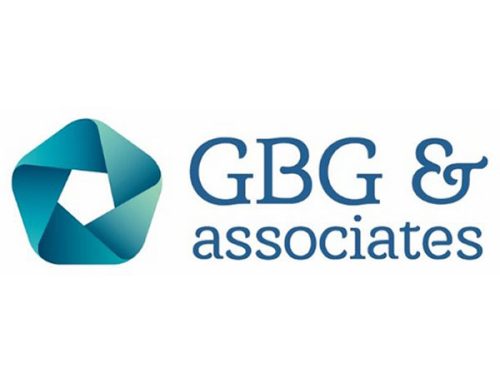 Marriott Vacations Worldwide Corporation (NYSE: VAC) yesterday reported first quarter financial results and reaffirmed its guidance for the full year 2018.
Marriott Vacations Worldwide Corporation (NYSE: VAC) yesterday reported first quarter financial results and reaffirmed its guidance for the full year 2018.
The company adopted Accounting Standards Update 2014-09, “Revenue from Contracts with Customers,” as amended, at the beginning of 2018. With this adoption, the company also restated its 2017 reported financial results and has provided a reconciliation to its previously reported financial results.
First Quarter 2018 Results:
- Net income was $36 million, or $1.32 fully diluted earnings per share (“EPS”), compared to net income of $28 million, or $1.00 fully diluted EPS, in the first quarter of 2017.
- Adjusted net income was $38 million, compared to adjusted net income of $28 million in the first quarter of 2017, an increase of 35 percent. Adjusted fully diluted EPS was $1.39, compared to adjusted fully diluted EPS of $1.01 in the first quarter of 2017, an increase of 38 percent.
- Adjusted EBITDA totaled $63 million, an increase of $9 million, or 17 percent, year-over-year.
- Total company vacation ownership contract sales were $204 million, an increase of $4 million, or 2 percent, compared to the prior year period. North America vacation ownership contract sales were $187 million, an increase of $4 million, or 2 percent, compared to the prior year period.
- The company estimates that the 2017 hurricanes negatively impacted contract sales by more than $6 million in the first quarter. In addition, the company changed its financial reporting calendar at the beginning of 2017, and as a result, the prior year first quarter had two additional days of sales. Excluding both impacts, we estimate that total company and North America vacation ownership contract sales would have grown 6 percent and 7 percent, respectively, over the prior year period.
- North America VPG totaled $3,728, a 1 percent increase from the first quarter of 2017. North America tours increased 3 percent year-over-year.
- Development margin was $22 million, flat to the first quarter of 2017. Development margin percentage was 12.9 percent compared to 13.8 percent in the prior year quarter.
- Total company adjusted development margin percentage, which excludes the impact of revenue reportability and other charges, was 16.4 percent in the first quarter of 2018 compared to 18.4 percent in the first quarter of 2017.
- North America adjusted development margin percentage, which excludes the impact of revenue reportability and other charges, was 19.9 percent in the first quarter of 2018 compared to 21.2 percent in the first quarter of 2017.
- Rental revenues totaled $74 million, a $7 million, or 10 percent, increase from the first quarter of 2017. Rental revenues net of expenses were $18 million, a $4 million, or 31 percent, increase from the first quarter of 2017.
- Resort management and other services revenues totaled $70 million, a $3 million, or 4 percent, increase from the first quarter of 2017. Resort management and other services revenues, net of expenses, totaled $32 million, a $2 million, or 8 percent, increase from the first quarter of 2017.
- Financing revenues totaled $35 million, a $3 million, or 10 percent, increase from the first quarter of 2017. Financing revenues, net of expenses and consumer financing interest expense, were $25 million, a $2 million, or 11 percent, increase from the first quarter of 2017.
- During the first quarter of 2018, the company returned $23 million to its shareholders through quarterly cash dividends and the repurchase of its common stock.
“I am very pleased with our start to 2018. In the first quarter, despite the lingering impact of the 2017 hurricanes, contract sales increased 2 percent and adjusted EBITDA grew 17 percent, as our business continues to grow from the ramp-up of our new locations as well as from marketing programs that continue to grow our tour flow,” said Stephen P. Weisz, president and chief executive officer. “Our first quarter performance was in line with our expectations, giving us confidence we can achieve our 2018 full year guidance, including contract sales growth of 7 to 12 percent, net income of $182 million to $193 million, and adjusted EBITDA of $310 million to $325 million.”
Non-GAAP financial measures, such as adjusted net income, adjusted EBITDA, adjusted fully diluted earnings per share, adjusted free cash flow, and adjusted development margin are reconciled and adjustments are shown and described in further detail on pages A-1 through A-17 of the Financial Schedules that follow.
Balance Sheet and Liquidity
On March 31, 2018, cash and cash equivalents totaled $324 million. Since the beginning of the year, real estate inventory balances decreased $2 million to $722 million, including $372 million of finished goods and $350 million of land and infrastructure. The company had $1 billion in debt outstanding, net of unamortized debt issuance costs, at the end of the first quarter, an increase of $83 million from year-end 2017, consisting primarily of $750 million of debt related to our securitized notes receivable and $194 million of convertible notes.
As of March 31, 2018, the company had approximately $244 million in available capacity under its revolving credit facility after taking into account outstanding letters of credit, and approximately $267 million of gross vacation ownership notes receivable eligible for securitization.
Impact of Accounting Changes
The company adopted Accounting Standards Update 2014-09, “Revenue from Contracts with Customers (Topic 606),” which, as amended, created ASC Topic 606, “Revenue from Contracts with Customers,” (“ASC 606″), also referred to as the new “Revenue Standard,” on a retrospective basis, at the beginning of 2018, and as a result, recognition of revenue from the sale of vacation ownership products that is deemed collectible is deferred from the point in time at which the statutory rescission period expires to closing, when control of the vacation ownership product is transferred to the customer. In addition, the company aligned its assessment of collectibility of the transaction price for sales of vacation ownership products with its credit granting policies. The company elected the practical expedient to expense all marketing and sales costs as they are incurred. Its consolidated cost reimbursements revenues and expenses increased significantly, as all costs reimbursed to it by property owners’ associations are now reported on a gross basis. In connection with the adoption of the new Revenue Standard, the company also reclassified certain revenues and expenses.
Summary Restated 2017 Financial Results Reflecting the Impact of Adopting the new Revenue Standard
The retrospective adoption of the new Revenue Standard resulted in the following restated quarterly financial results for 2017 for net income and adjusted EBITDA as highlighted below. Net income and adjusted EBITDA are reconciled to the quarterly 2017 reported results on pages A-10 through A-14 of the Financial Schedules.
|
Q1 2017 |
Q2 2017 |
Q3 2017 |
Q4 2017 |
||||||||
|
$ in millions |
Reported |
Adjusted |
Reported |
Adjusted |
Reported |
Adjusted |
Reported |
Adjusted |
|||
|
Net income |
$33.7 |
$27.9 |
$44.3 |
$48.2 |
$40.8 |
$47.0 |
$108.0 |
$112.2 |
|||
|
Adjusted EBITDA |
$62.1 |
$53.6 |
$77.9 |
$83.6 |
$74.0 |
$84.8 |
$66.1 |
$72.0 |
|||
Outlook
The company is reaffirming guidance for the full year 2018 on the non-GAAP financial measures provided below. Pages A-1 through A-17 of the Financial Schedules reconcile the non-GAAP financial measures set forth below to the following full year 2018 expected GAAP results:
|
Net income |
$182 million |
to |
$193 million |
|
Fully diluted EPS |
$6.61 |
to |
$7.01 |
|
Net cash provided by operating activities |
$180 million |
to |
$205 million |
|
Adjusted net income |
$184 million |
to |
$195 million |
|
Adjusted fully diluted EPS |
$6.69 |
to |
$7.09 |
|
Adjusted EBITDA |
$310 million |
to |
$325 million |
|
Adjusted free cash flow |
$185 million |
to |
$215 million |
|
Contract sales growth |
7 percent |
to |
12 percent |
First Quarter 2018 Earnings Conference Call
The company will hold a conference call at 10:00 a.m. ET today to discuss these results and the guidance for full year 2018. Participants may access the call by dialing 877-407-8289 or 201-689-8341 for international callers. A live webcast of the call will also be available in the Investor Relations section of the company’s website at www.marriottvacationsworldwide.com.
An audio replay of the conference call will be available for seven days and can be accessed at 877-660-6853 or 201-612-7415 for international callers. The conference ID for the recording is 13678402. The webcast will also be available on the company’s website.
About Marriott Vacations Worldwide Corporation
Marriott Vacations Worldwide Corporation is a leading global pure-play vacation ownership company, offering a diverse portfolio of quality products, programs and management expertise with over 65 resorts. Its brands include Marriott Vacation Club, The Ritz-Carlton Destination Club and Grand Residences by Marriott. Since entering the industry in 1984 as part of Marriott International, Inc., the company earned its position as a leader and innovator in vacation ownership products. The company preserves high standards of excellence in serving its customers, investors and associates while maintaining a long-term relationship with Marriott International. For more information, please visit www.marriottvacationsworldwide.com.
Note on forward-looking statements: This press release and accompanying schedules contain “forward-looking statements” within the meaning of federal securities laws, including statements about future operating results, estimates, and assumptions, and similar statements concerning anticipated future events and expectations that are not historical facts. The company cautions you that these statements are not guarantees of future performance and are subject to numerous risks and uncertainties, including volatility in the economy and the credit markets, supply and demand changes for vacation ownership and residential products, competitive conditions, the availability of capital to finance growth, and other matters referred to under the heading “Risk Factors” contained in the company’s most recent Annual Report on Form 10-K filed with the U.S. Securities and Exchange Commission (the “SEC”) and in subsequent SEC filings, any of which could cause actual results to differ materially from those expressed in or implied in this press release. These statements are made as of May 3, 2018 and the company undertakes no obligation to publicly update or revise any forward-looking statement, whether as a result of new information, future events, or otherwise.
|
MARRIOTT VACATIONS WORLDWIDE CORPORATION |
|
NON-GAAP FINANCIAL MEASURES |
|
In our press release and schedules, and on the related conference call, we report certain financial measures that are not prescribed by United States generally accepted accounting principles (“GAAP”). We discuss our reasons for reporting these non-GAAP financial measures below, and the financial schedules reconcile the most directly comparable GAAP financial measure to each non-GAAP financial measure that we report (identified by a double asterisk (“**”) on the preceding pages). Although we evaluate and present these non-GAAP financial measures for the reasons described below, please be aware that these non-GAAP financial measures have limitations and should not be considered in isolation or as a substitute for revenues, net income, earnings per share or any other comparable operating measure prescribed by GAAP. In addition, these non-GAAP financial measures may be calculated and / or presented differently than measures with the same or similar names that are reported by other companies, and as a result, the non-GAAP financial measures we report may not be comparable to those reported by others. |
|
Adjusted Net Income |
|
We evaluate non-GAAP financial measures, including Adjusted Net Income, Adjusted EBITDA, and Adjusted Development Margin, that exclude certain items in the quarters ended March 31, 2018 and March 31, 2017, because these non-GAAP financial measures allow for period-over-period comparisons of our on-going core operations before the impact of these items. These non-GAAP financial measures also facilitate our comparison of results from our on-going core operations before these items with results from other vacation ownership companies. |
|
Certain items – Quarter Ended March 31, 2018 |
|
In our Statement of Income for the quarter ended March 31, 2018, we recorded $2.6 million of net pre-tax items, which included $3.2 million of acquisition costs, including $2.5 million of acquisition costs associated with the anticipated future capital efficient acquisition of the operating property in San Francisco, California and $0.7 million of other acquisition costs, partially offset by a $0.5 million favorable true up of previously recorded costs associated with Hurricane Irma and Hurricane Maria (recorded in gains and other income) and a $0.1 million true up of previously recorded litigation settlement expenses. |
|
Certain items – Quarter Ended March 31, 2017 |
|
In our Statement of Income for the quarter ended March 31, 2017, we recorded $0.5 million of net pre-tax items, which included $0.4 million of acquisition costs and $0.1 million of losses and other expense. |
|
Adjusted Development Margin (Adjusted Sale of Vacation Ownership Products Net of Expenses) |
|
We evaluate Adjusted Development Margin (Adjusted Sale of Vacation Ownership Products Net of Expenses) as an indicator of operating performance. Adjusted Development Margin adjusts Sale of vacation ownership products revenues for the impact of revenue reportability, includes corresponding adjustments to Cost of vacation ownership products expense and Marketing and sales expense associated with the change in revenues from the Sale of vacation ownership products, and may include adjustments for certain items as itemized in the discussion of Adjusted Net Income above. We evaluate Adjusted Development Margin because it allows for period-over-period comparisons of our on-going core operations before the impact of revenue reportability and certain items to our Development Margin. |
|
A-17 |
|
MARRIOTT VACATIONS WORLDWIDE CORPORATION |
|
NON-GAAP FINANCIAL MEASURES |
|
Earnings Before Interest Expense, Taxes, Depreciation and Amortization (“EBITDA”) and Adjusted EBITDA |
|
EBITDA is defined as earnings, or net income, before interest expense (excluding consumer financing interest expense), provision for income taxes, depreciation and amortization. For purposes of our EBITDA and Adjusted EBITDA calculations, we do not adjust for consumer financing interest expense because the associated debt is secured by vacation ownership notes receivable that have been sold to bankruptcy remote special purpose entities and is generally non-recourse to us. Further, we consider consumer financing interest expense to be an operating expense of our business. We consider EBITDA and Adjusted EBITDA to be indicators of operating performance, which we use to measure our ability to service debt, fund capital expenditures and expand our business. We also use EBITDA and Adjusted EBITDA, as do analysts, lenders, investors and others, because these measures exclude certain items that can vary widely across different industries or among companies within the same industry. For example, interest expense can be dependent on a company’s capital structure, debt levels and credit ratings. Accordingly, the impact of interest expense on earnings can vary significantly among companies. The tax positions of companies can also vary because of their differing abilities to take advantage of tax benefits and because of the tax policies of the jurisdictions in which they operate. As a result, effective tax rates and provision for income taxes can vary considerably among companies. EBITDA and Adjusted EBITDA also exclude depreciation and amortization because companies utilize productive assets of different ages and use different methods of both acquiring and depreciating productive assets. These differences can result in considerable variability in the relative costs of productive assets and the depreciation and amortization expense among companies. Adjusted EBITDA reflects additional adjustments for certain items, as itemized in the discussion of Adjusted Net Income above, and excludes non-cash share-based compensation expense to address considerable variability among companies in recording compensation expense because companies use share-based payment awards differently, both in the type and quantity of awards granted. Prior period presentation has been recast for consistency. We evaluate Adjusted EBITDA as an indicator of operating performance because it allows for period-over-period comparisons of our on-going core operations before the impact of the excluded items. Together, EBITDA and Adjusted EBITDA facilitate our comparison of results from our on-going core operations before the impact of these items with results from other vacation ownership companies. |
|
Free Cash Flow and Adjusted Free Cash Flow |
|
We evaluate Free Cash Flow and Adjusted Free Cash Flow as liquidity measures that provide useful information to management and investors about the amount of cash provided by operating activities after capital expenditures for property and equipment, changes in restricted cash, and the borrowing and repayment activity related to our securitizations, which cash can be used for strategic opportunities, including acquisitions and strengthening the balance sheet. Adjusted Free Cash Flow, which reflects additional adjustments to Free Cash Flow for the impact of organizational and separation related, litigation, and other cash charges, allows for period-over-period comparisons of the cash generated by our business before the impact of these items. Analysis of Free Cash Flow and Adjusted Free Cash Flow also facilitates management’s comparison of our results with our competitors’ results. |





